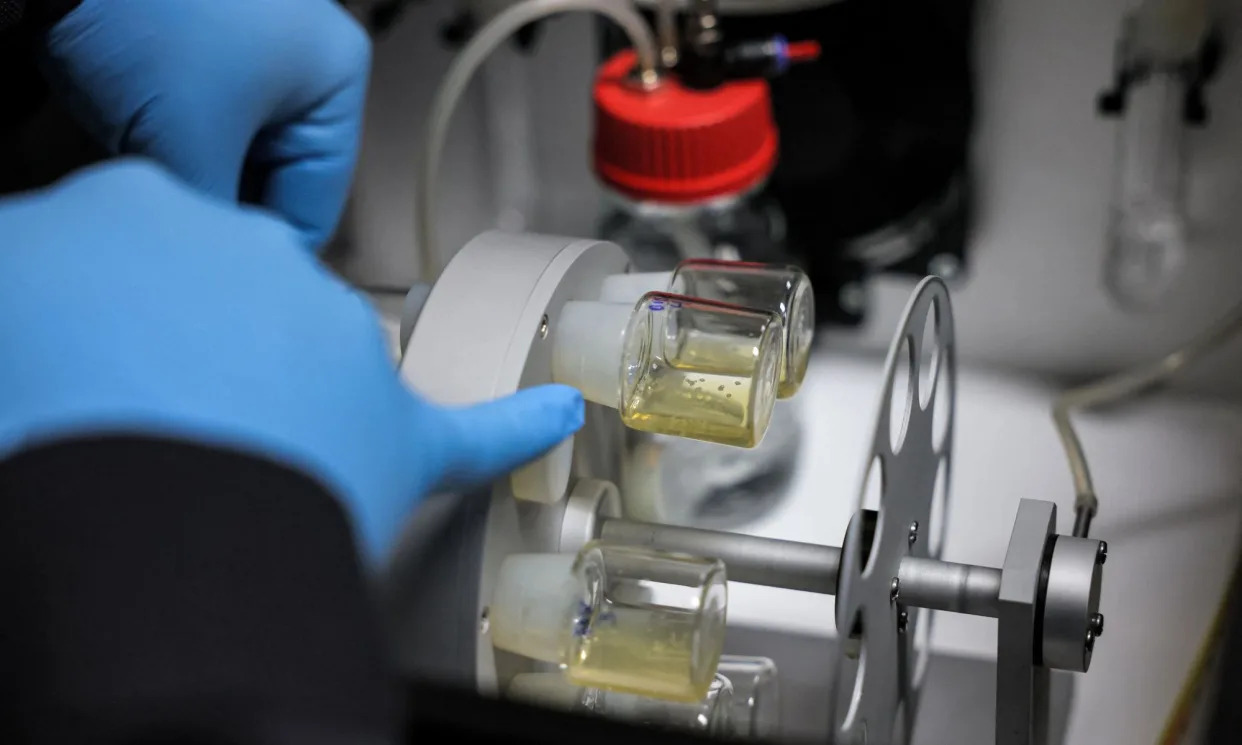Work on synthetic human embryos to get code of practice in UK
Ian Sample Science editor
Wed, 3 July 2024

Stem cell-based embryo models made global headlines last summer when researchers said they had created one with a heartbeat and traces of blood.Photograph: Ahmad Gharabli/AFP/Getty Images
Biological models of human embryos that can develop heartbeats, spinal cords and other distinctive features will be governed by a code of practice in Britain to ensure that researchers work on them responsibly.
Made from stem cells, they mimic, to a greater or less extent, the biological processes at work in real embryos. By growing them in the laboratory, scientists hope to learn more about how human embryos develop and respond to their environment, questions that would be impossible to answer with real embryos donated for research.
Scientists have worked on stem cell-based embryo models, or SCBEMs, for many years, but the technology only made global headlines last summer when researchers said they had created one with a heartbeat and traces of blood. Made without the need for eggs or sperm, the ball of cells had some features that would typically appear in the third or fourth week of pregnancy.
The technology, which advocates believe could shed fresh light on potential causes of infertility, is so new that SCBEMs are not directly covered by UK law or regulations. The situation leaves the scientists pursuing the research in an uncomfortable grey area. The new guidelines, drawn up by experts at the University of Cambridge and the Progress Educational Trust, aim to clarify the situation by setting down rules and best practice.
Dr Peter Rugg-Gunn, a member of the code of practice working group, said the guidance took “stem cell-based embryo models out of the grey zone and on to more stable footing”. It should also reassure the public that research is being performed carefully and under proper scrutiny, added Rugg-Gunn, who is a group leader at the Babraham Institute.
The code reminds researchers that there may be “a range of emotional responses” to SCBEMs with heartbeats, spinal cords and other recognisable features, and urges them to be “aware of and sensitive to these concerns, irrespective of whether they are thought to be ethically or legally relevant”.
Under existing UK law, scientists can grow real human embryos donated for research for up to 14 days in the lab, though many argue for the limit to be extended to allow for the study of later stages of embryonic development.
The new guidelines establish an oversight committee that will decide on a case-by-case basis how long specific embryo models can be grown for. The code does not rule out experiments that grow them for more than 14 days, but Roger Sturmey, professor of reproductive medicine at Hull York medical school and chair of the code of practice working group said any such experiments “would have to be very well justified”.
The code prohibits any human SCBEMs from being transferred into the womb of a human or animal, or being allowed to develop into a viable organism in the lab.
Sandy Starr, the deputy director of the Progress Educational Trust, said he expected researchers, funders, research institutes, publishers and regulators to recognise the guidelines. Scientists who worked outside the code would “find it difficult to publish, find funding and face opprobrium from their peers”,” he added.
No comments:
Post a Comment